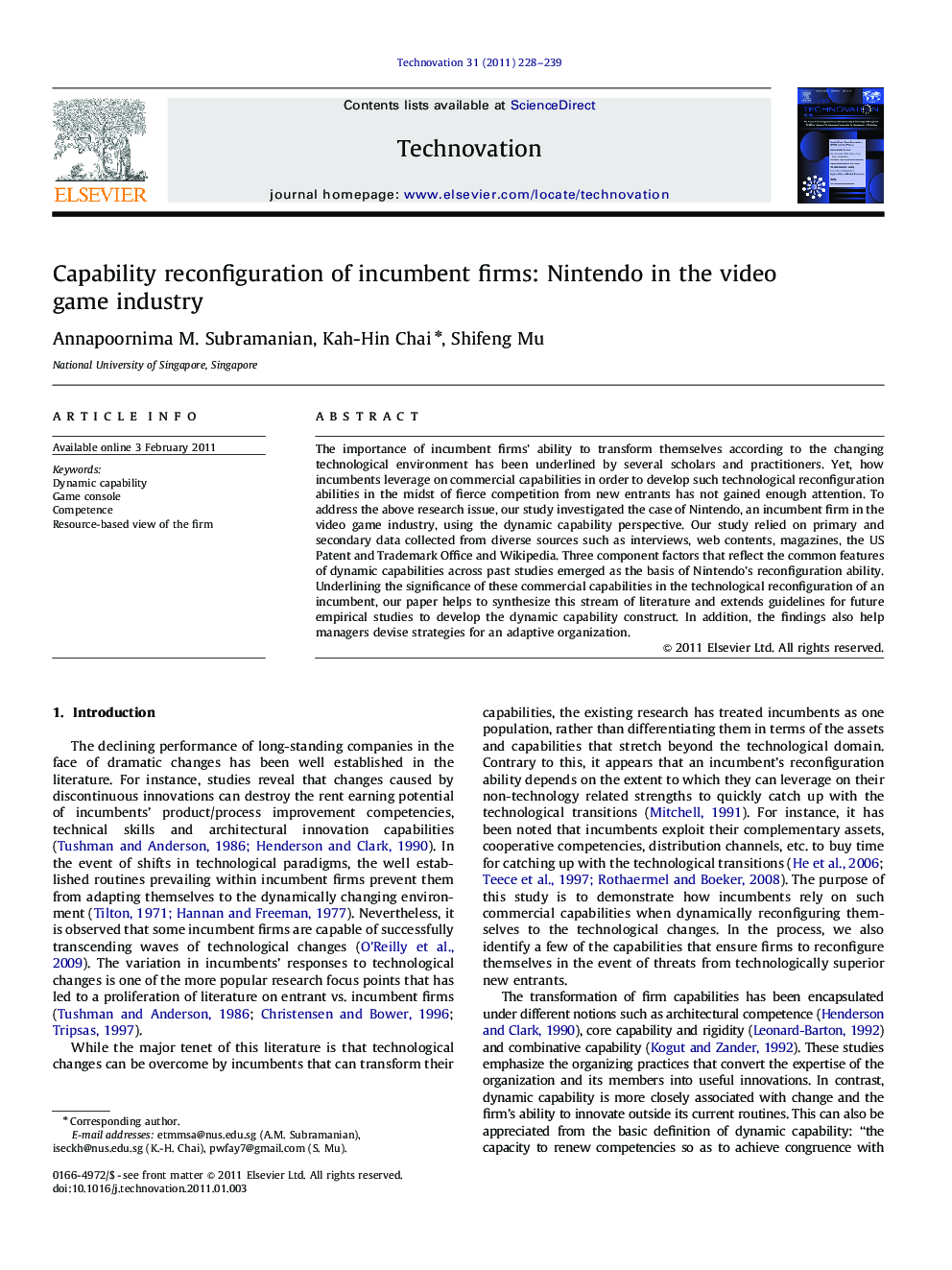| Article ID | Journal | Published Year | Pages | File Type |
|---|---|---|---|---|
| 1022263 | Technovation | 2011 | 12 Pages |
The importance of incumbent firms' ability to transform themselves according to the changing technological environment has been underlined by several scholars and practitioners. Yet, how incumbents leverage on commercial capabilities in order to develop such technological reconfiguration abilities in the midst of fierce competition from new entrants has not gained enough attention. To address the above research issue, our study investigated the case of Nintendo, an incumbent firm in the video game industry, using the dynamic capability perspective. Our study relied on primary and secondary data collected from diverse sources such as interviews, web contents, magazines, the US Patent and Trademark Office and Wikipedia. Three component factors that reflect the common features of dynamic capabilities across past studies emerged as the basis of Nintendo's reconfiguration ability. Underlining the significance of these commercial capabilities in the technological reconfiguration of an incumbent, our paper helps to synthesize this stream of literature and extends guidelines for future empirical studies to develop the dynamic capability construct. In addition, the findings also help managers devise strategies for an adaptive organization.
Research highlights▸ The paper explains how Nintendo responds to technologically superior competitors such as Sony and Microsoft. ▸ We show that Nintendo, the incumbent, successfully leverage on their commercial capabilities, rather than technological competences, when developing the new game console, Wii. ▸ Specifically, the three commercial capabilities of Nintendo that helped the firm to reconfigure itself in a changing technological environment are dynamic marketing competencies, collaborative competencies and complementary competencies.
